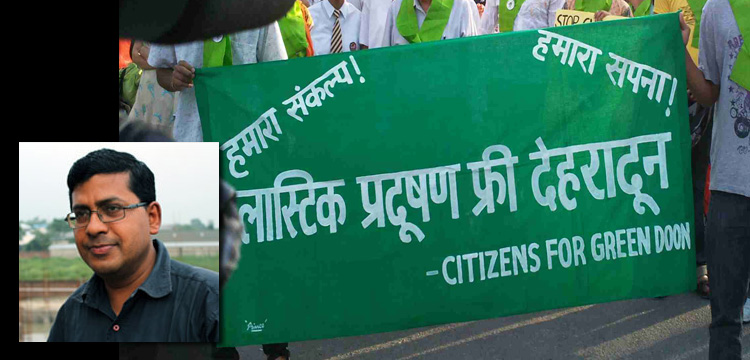Darkness of Development – Romit Bagchi, author and veteran Indian journalist
One of my colleagues raised the topic conversationally. He asked whether development if taken to his village would end the culture his village had been nurturing for ages. The question asked in earnest set me into reflecting.
I had come to Dehradun twice as a tourist before I came here last year with a job. My last two visits were many years ago when Uttarakhand as a state was still lying in the womb of time. I can remember stopping near a bungalow somewhere in Dehradun when I came here for the first time. The same bungalow I found standing erect when I settled here after many years, the whirlwind of development notwithstanding.
I was delighted. It looked like the relic of an earlier era that was lost long ago with Dehradun having wonderfully plunged itself into the all-devouring swamp of ‘development’ that has been uplifting ‘ancient’ India from the morass of her ‘dead’ past- new construction coming up, demolishing the old, ruled by the sparkling laws of utilitarianism, prizing body and gagging soul. The bungalow flanked by a sprawling garden looked like an anachronism, representing the bygone age of leisure and space, simplicity and mystery, facts and mythology, seamlessly woven together in a splendid tapestry, the stuffs that made the quintessential Dehradun of the yore.
I strongly feel Dehradun represents the dark face of India’s developmental future. The fast-expanding city with flamboyant buildings and smart shops, raising heads amidst urban squalor, dwindling indigenous culture and a huge floating population, offend the eyes more than other state capitals where the tasteless medley seems to have evolved over time. Dehradun seems to have morphed rather overnight from a prominent passage to Devobhoomi to the bustling capital of a state.
Here I am tempted to mention, in passing, that Santiniketan – my alma mater-where I spent some years as a boy now repels me. It has ceased to be the abode of peace that Tagore envisioned. I now miss the idyllic, serene ambience that I had felt when I was there. I miss the fragrance of flowers, the trees standing tall, the thatched cottages and the nearly empty roads inside the Ashram. Cars were rare then. The teachers, even the principal and others used to cycle their ways in and out of the Ashram. There were perhaps a couple of cars meant for the vice-chancellor which he seldom used.
Now, one thing has, however, happened both in Dehradun and Santiniketan, a class of philistines has sprung up from nowhere, inclined to flaunt wealth, as if becoming rich is the be-all-and-end-all of life.
However, there is another danger-deeper and subtler – and that is the deadening of the mind. Man being a mental being, it is mind that distinguishes him from plants and animals. While the latter, endowed with natural instincts, are subjected to natural laws man has no such instinct or whatever he had in early phase of his evolution he has lost. His mentor is mind or the consciousness that is beyond mind. The problem is that the mind is losing its way in the desert- sands of ‘development’-nourished surface self. It cannot discern its true needs. We are all stuck in them despite us vociferously claiming to the contrary.
However, the phase of such lop-sided development would continue till an alternative model emerges. We cannot reverse things now. True, a reverse trend is becoming increasingly discernible across the world. Some people, at least, are becoming aware of the futility of revolving around the accustomed grooves of physical-vital needs, ignoring the calls of the deeper mind. But they are still groping in the dark. Things are still far-off.
The true aim of economic development is neither to denude nature nor to crush culture, but to take all comprehensively to ensure for all in highest possible measure the joy of work according to their own natures and also to ensure free leisure for each to grow inwardly.
However, Indian culture cannot be crushed. It has withstood sanguinary upheavals through the vicissitudes of her chequered history. The aliens came and they ruled over the cities and towns and areas adjoining them. They failed to touch our villages. And it is mainly in the villages that the Sanatana Dharma that is rightly identified with the Indian nationhood keeps thriving over millennia.
However, now the dangers are more potent, as they are emerging more from within than without. Now, the villages are under threat of being reduced to amorphous concreteness. Even the celebrated temples that draw millions of pilgrims annually are not being left to themselves. Attempts are on to transform them into prima donnas of the world. Yet, Sanatana Dharma is safe. It would thrive as long as India thrives. It would perish if India perishes.
Previously published : http://www.dailypioneer.com/state-editions/dehradun/darkness-of-development.html
© Romit Bagchi


